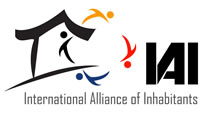Nairobi River Basin Programme, Problems and delays in the project
Nairobi produces an average of 2,400 tons of garbage per day, of which only half is taken to the only municipal waste dump, Dandora, on the eastern edge of the city, whereas the other half is dumped in illegal sites here and there throughout the territory.
These “secondary”, uncontrolled dumps are one of the major sources of pollution of the Nairobi River Basin, when the rains arrive and spread this blend of refuse along the banks of the river.
This critical situation is made even worse by the liquid industrial waste discharged illegally into the river, with no regard for existing legislation on this issue, often under the collusion of the City Council, which does nothing to impede these bad practices, just as in the worst scenarios about pollution that one reads about in children’s books. The “green city in the sun” is not very green, when in fact, the only place which gives the illusion that there are no waste problems, is the city center, with its shining buildings and well tended gardens promoted through the City Council’s Beautification Programme.
Recovery of 2.5 kms between Museum Hil l and the Race Course Bridge: a two year delay
According to the NRBP (Nairobi River Basin Programme), the first pilot intervention is supposed to be the recovery of a 2.5 km stretch of land located between Museum Hill and the Race Course Bridge, the so-called Demo-stretch, which was earmarked to begin in September 2007. We decided to take a look at what has been accomplished since then.
“The work was begun more or less two months ago”, says one of the workers from the Ministry of Environment, involved in waste collection. “We’re not volunteers, we are workers paid by the Government, but we do not have a contract. They can send us away whenever they want.”
The area involved in the clean-up efforts starts from the National Museum and goes all the way to the Matatu Terminal; there are more or less one hundred workers spread out through this territory, but they know nothing about cleaning up the river. Their job is to pick up the garbage, put it aside and plant a few trees. Many of the plants which are already visible along the riverbank (mostly bananas) have grown spontaneously thanks to the spores and seeds from nearby trees. We asked two young women if they knew anything about other clean up squads working in the area, but they confirmed that theirs was the only one. A few steps away from them, a girl with a baby on her back was washing her clothes in the river.
There is no trace of the “public toilet service” mentioned in the document. “It is an operation aiming to encourage the population residing near the river to assume a more eco-sustainable attitude. We have attempted to use a participative approach, and HABITAT played a supporting role in mobilizing the community.
These working groups were put into action, but the delay in works is due to several reasons, among which the turn-over of the officials of the City Council. “Every time one of them leaves, the project comes to a halt and starts up again only when the substitute is capable of managing and understanding the objectives of his predecessor” said Ms. Ndinda Mwongo, coordinator of the NRBP for UN-HABITAT.
Even greater problems for relocating the settlers and the Dandora waste dump
If the Demo-stretch has only just been started, how much longer will it take to see the completion of the other areas? There were no informal businesses going on in this area, except for the “chokoras” who gather trash for re-sale. The market is under the Race Course Bridge, but it is not at risk because it is above the riverbank. The social-economic study carried out by HABITAT revealed the massive presence of informal businesses such as car-washing and food kiosks, which used river water to conduct their business. Many others use the river as a dump, throwing liquid waste directly into it without bothering to purify it.
An example is the Dagoretti slaughterhouse: the river water in that area is always red and even the animals’ bones are discharged directly into the water. Ms Mwongo affirms that it is the responsibility of the Nairobi City Council to establish an adequate purification system, but for the moment it has only obliged the Dagoretti slaughterhouse to clean up the waste in an effort to avoid contamination of the water. A census of the informal businesses is under way by the Ministry of Land, which must find an adequate relocation solution, but this will not be easy because many of these businesses have been running for ten-twenty years.
Currently the waste from the informal businesses along the river is collected and sent to the Dandora waste dump, but Ms. Mwongo explained that the river or the dump are not the only issues at hand, (although the certainty of the hazard they pose has been well established by the UNEP study on blood lead levels). In reality it is the entire waste collection system of the city of Nairobi that is insufficient.
The idea of moving the Dandora dump has not yet been implemented, although it is contemplated in the project. An alternative area has been found in the district of Ruai, a scarcely populated, arid area, where a sanitary landfill has been proposed instead of a dump. But the local inhabitants have already begun to protest because they use the area to grow vegetables for their weekly meals (the so-called sukuma wiki ). “Ever since it was created, the Dandora dump was planned as a temporary site” explained Ms Kynianjui of the UNEP-“the problem has worsened because it is the only legal site of the NCC. We of the UNEP have the task to make sure the municipality of Nairobi moves to find a solution to this environmental issue, which has repercussions on the inhabitants of the bordering areas (Dandora and Babadogo). We offer the know how of our experts based in Japan, who are at the forefront in waste management technology”. Obviously this has a cost and it is not easy to find funding for such projects. Several embassies, including the Italian, have declared their willingness to partially finance the NRBP, together with NGO’s, the private sector and the Africa Development Bank, which, however, has linked the funding to the evaluation of the social impact of the project (social impact assessment), which must clearly indicate the area where the informal businesses will be relocated. Ms. Damaris Mungai affirms that the impact study has not yet begun, because the government has not yet acquired funds with which to pay the experts, even though the census of the informal businesses has been completed.
It is not clear what the role of the European Union should be in this project. “We are looking for sponsors through a country by country approach, explained Ms. Mungai – we prefer to contact different countries through their embassies and try to understand which ones might be interested as individuals in financing the project.”
The feeling we get in gathering these interviews is that no one really knows what this will mean to the local population. We never hear anyone speak about people who might lose their jobs or homes, but only about the informal or illegal businesses, or about people who have been along these banks for years without permission to settle along this area. None of the so-called coordinators is capable of giving a complete idea about the project: too many areas of competence ruin the collective spirit of the project in its various aspects; too many agencies working on its implementation cause a thinning out and fractioning of responsibility, which ruins the chances of success of such a difficult project with repercussions on the lives and health of the inhabitants of Nairobi.
Nairobi, 31/07/09
Maria Grazia Montella


